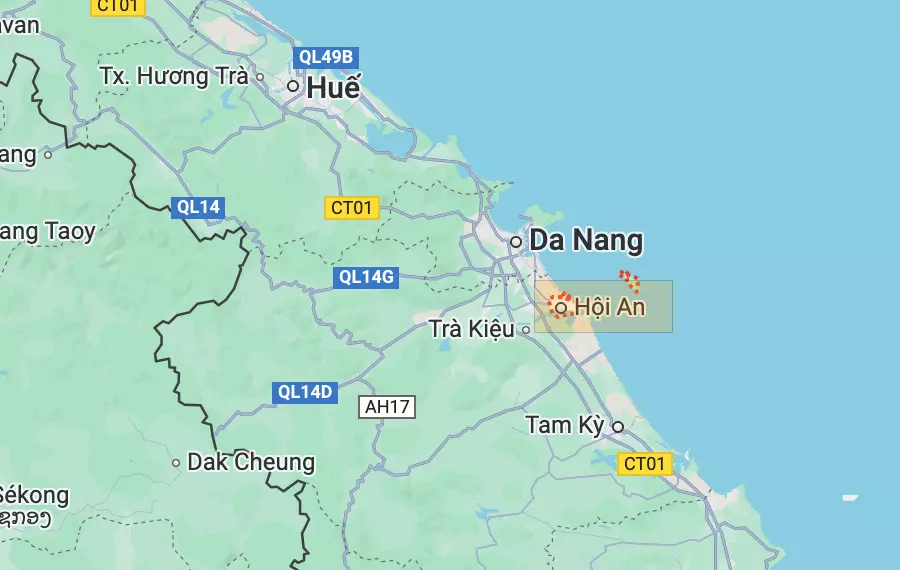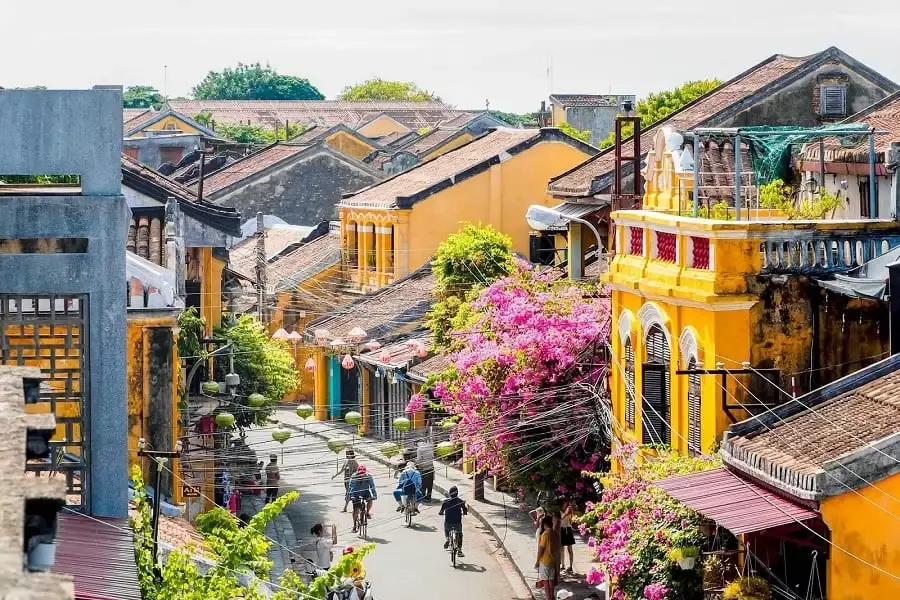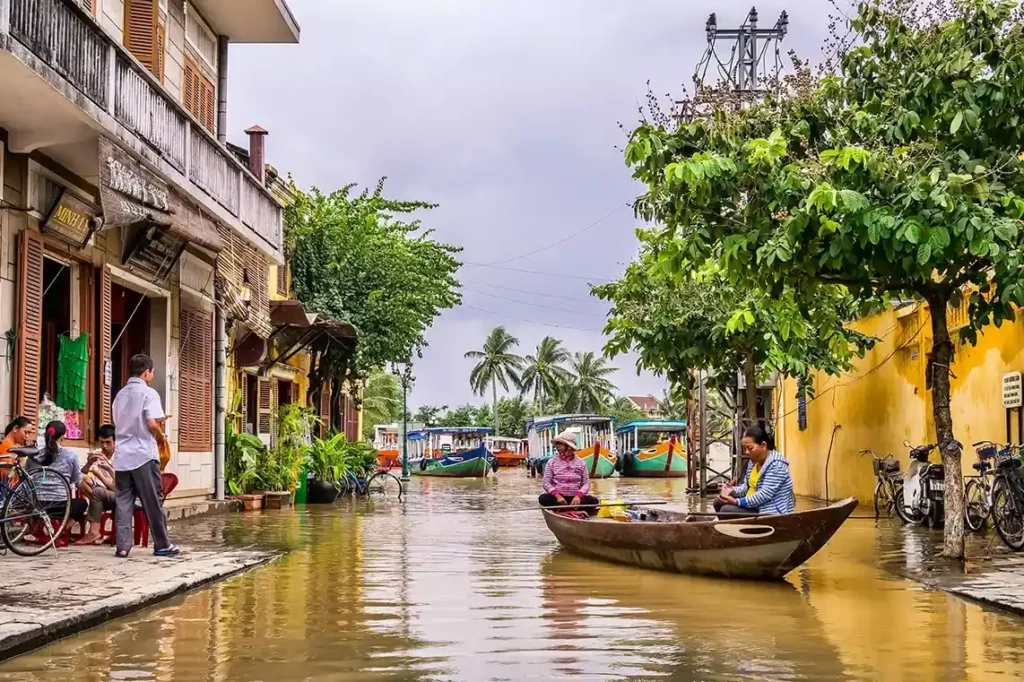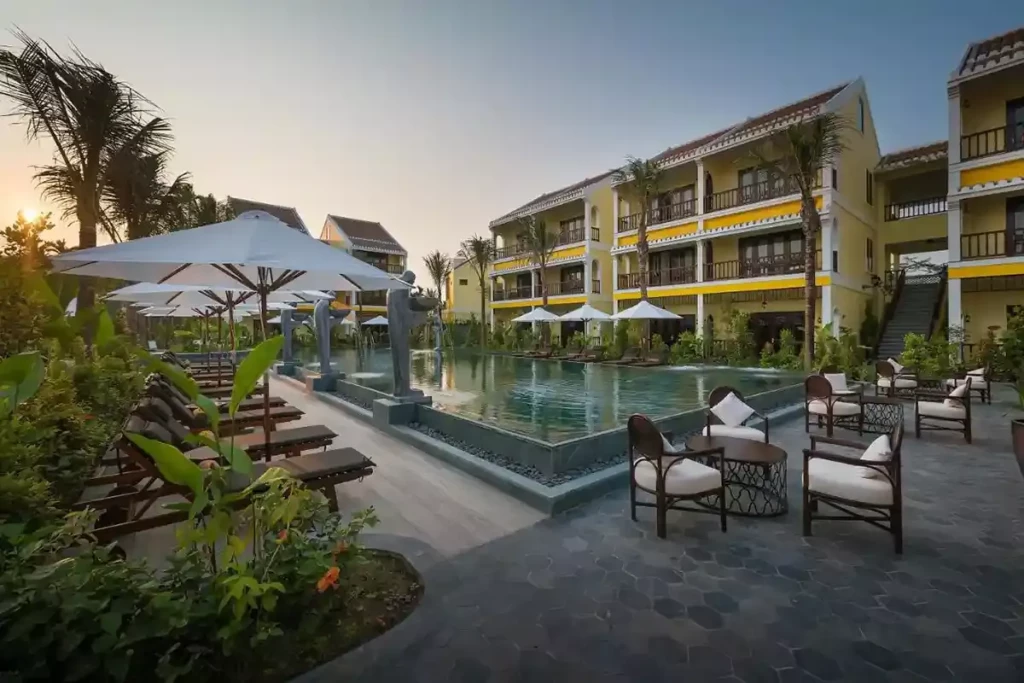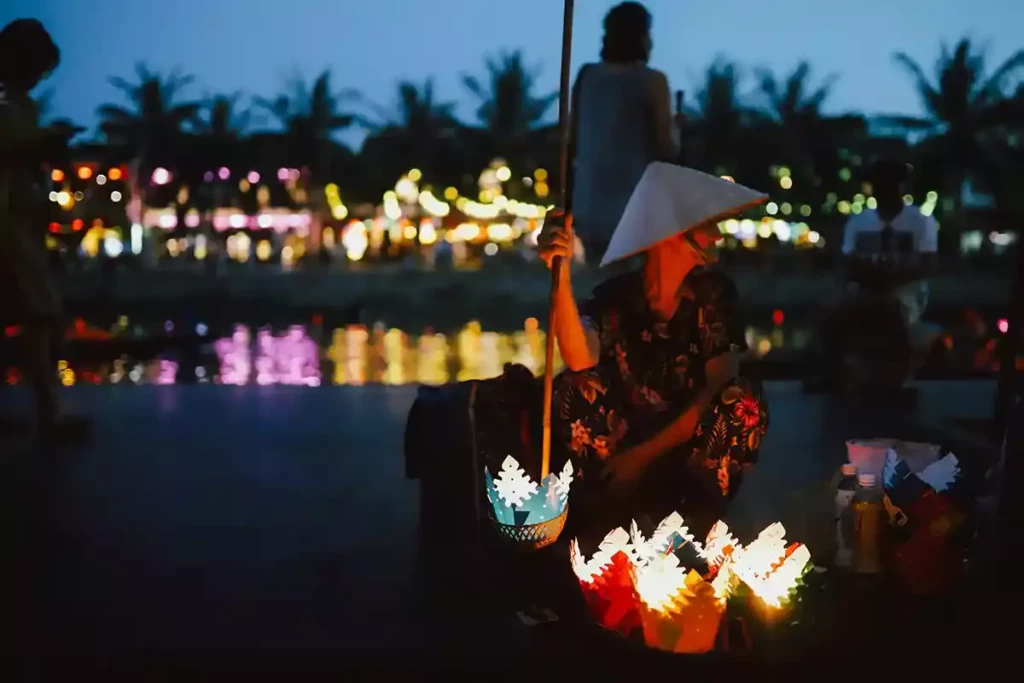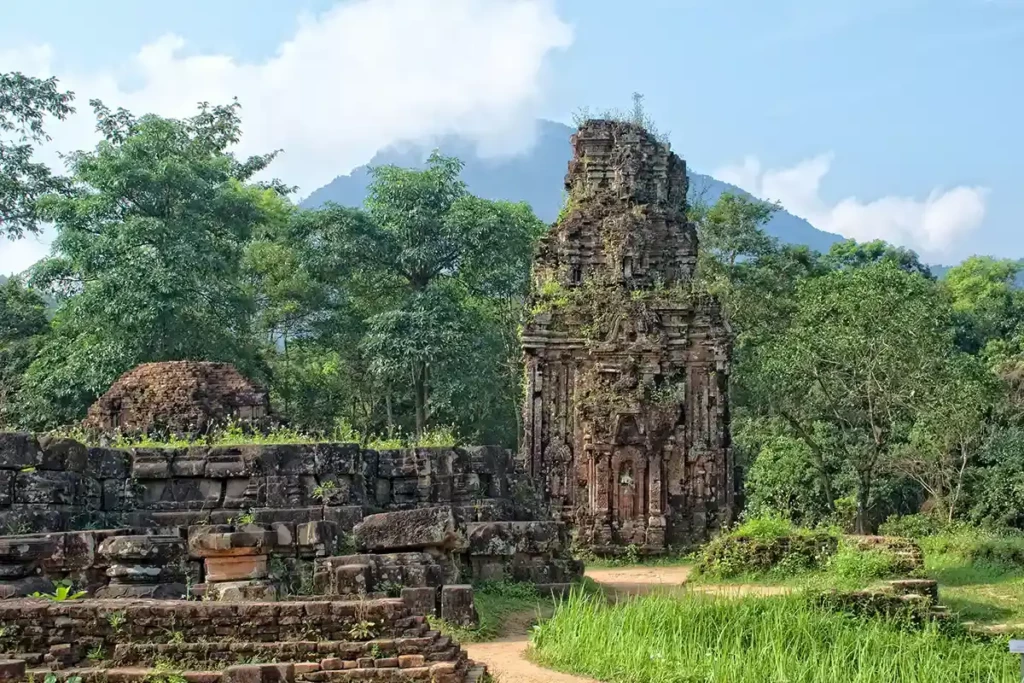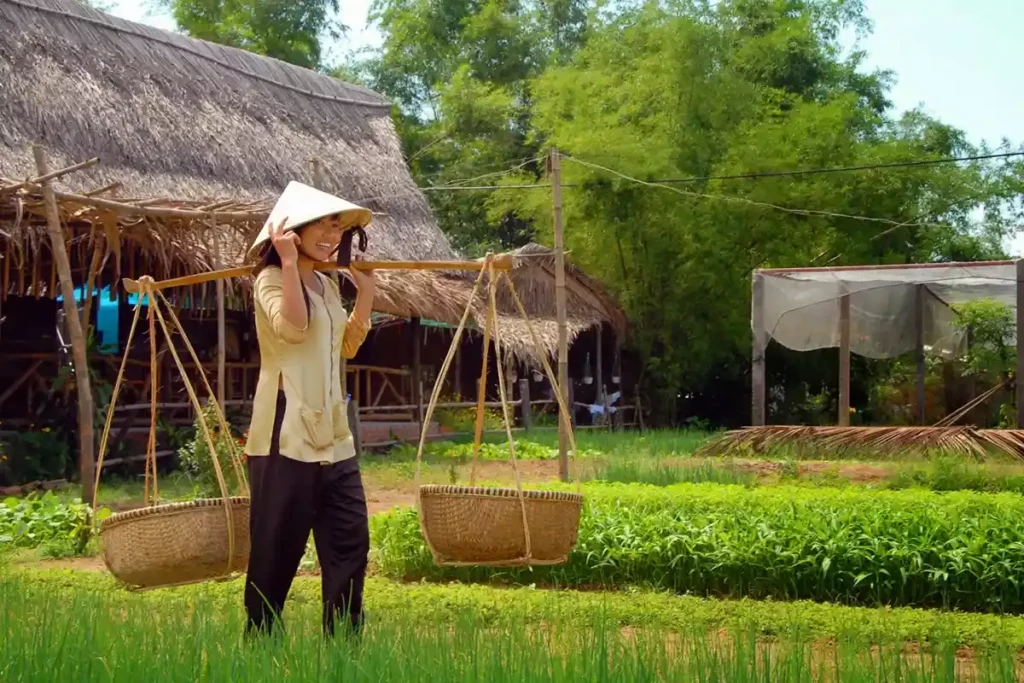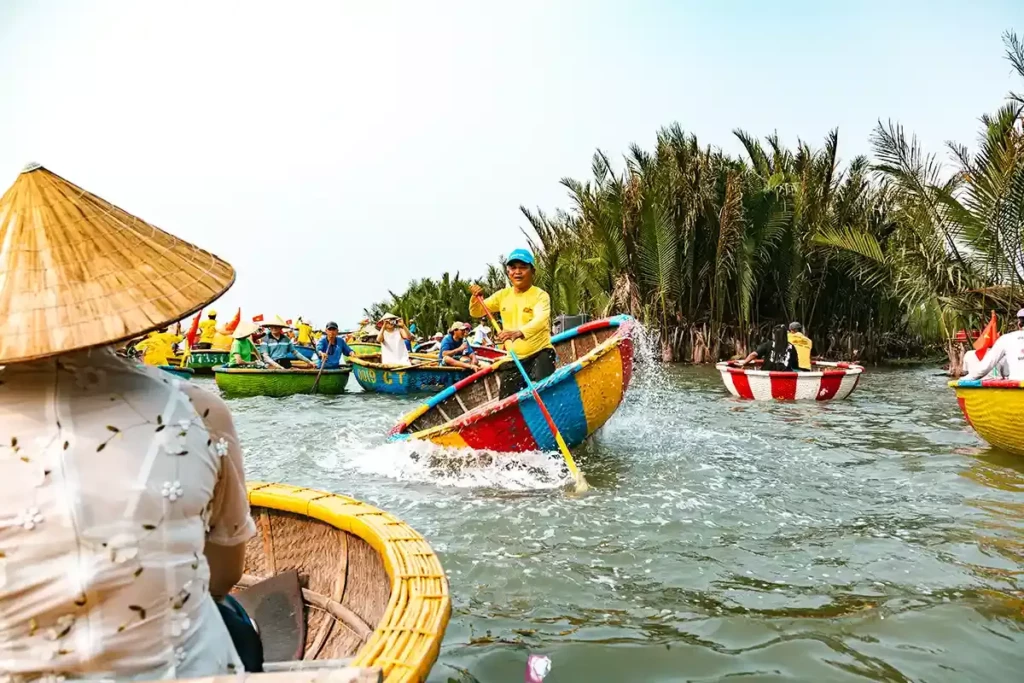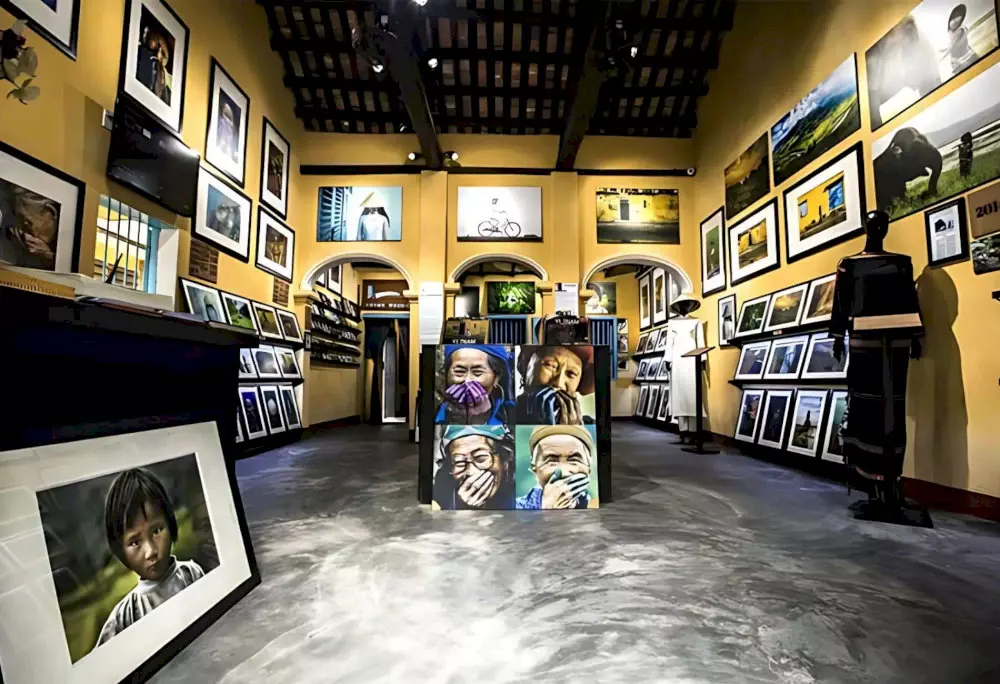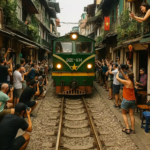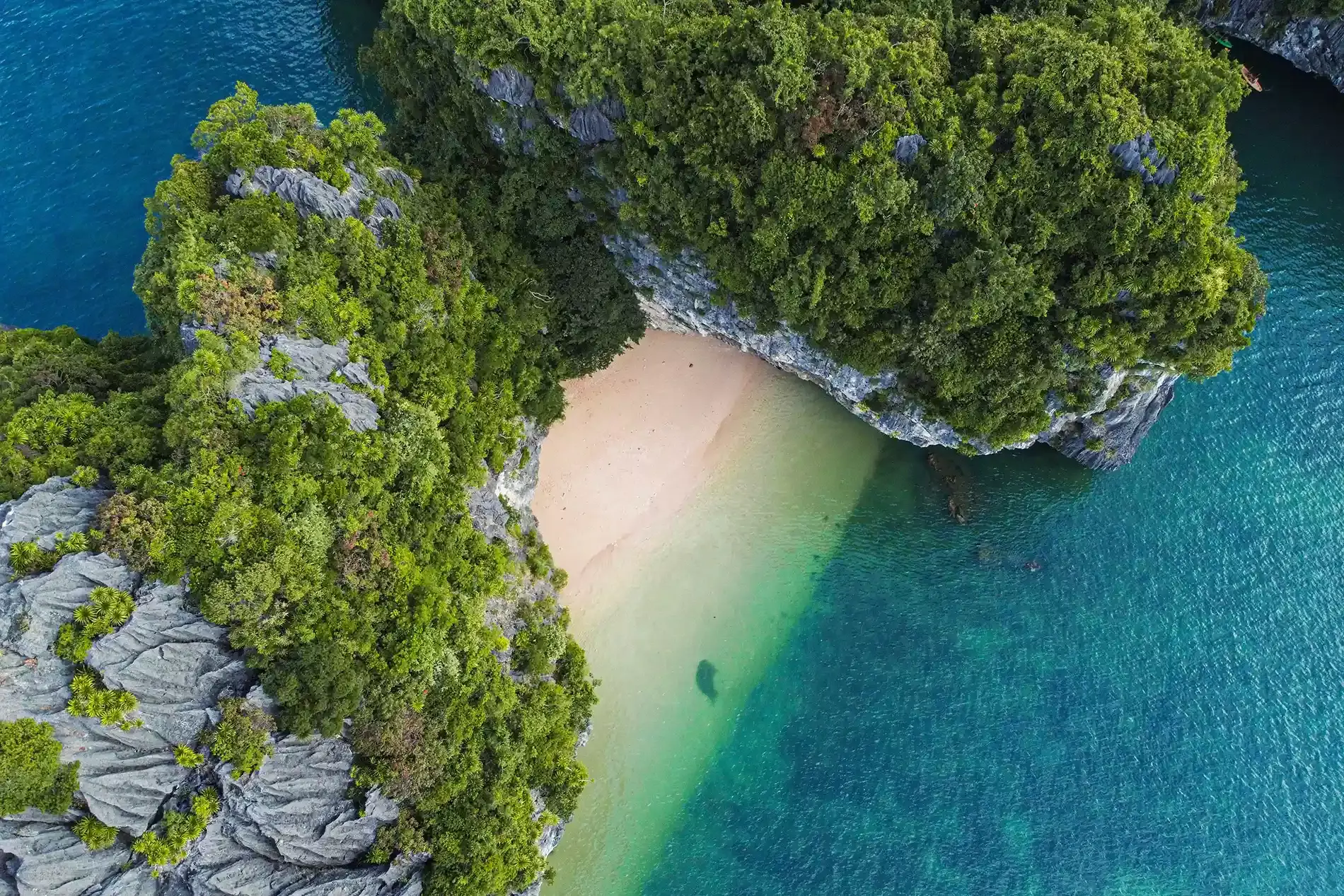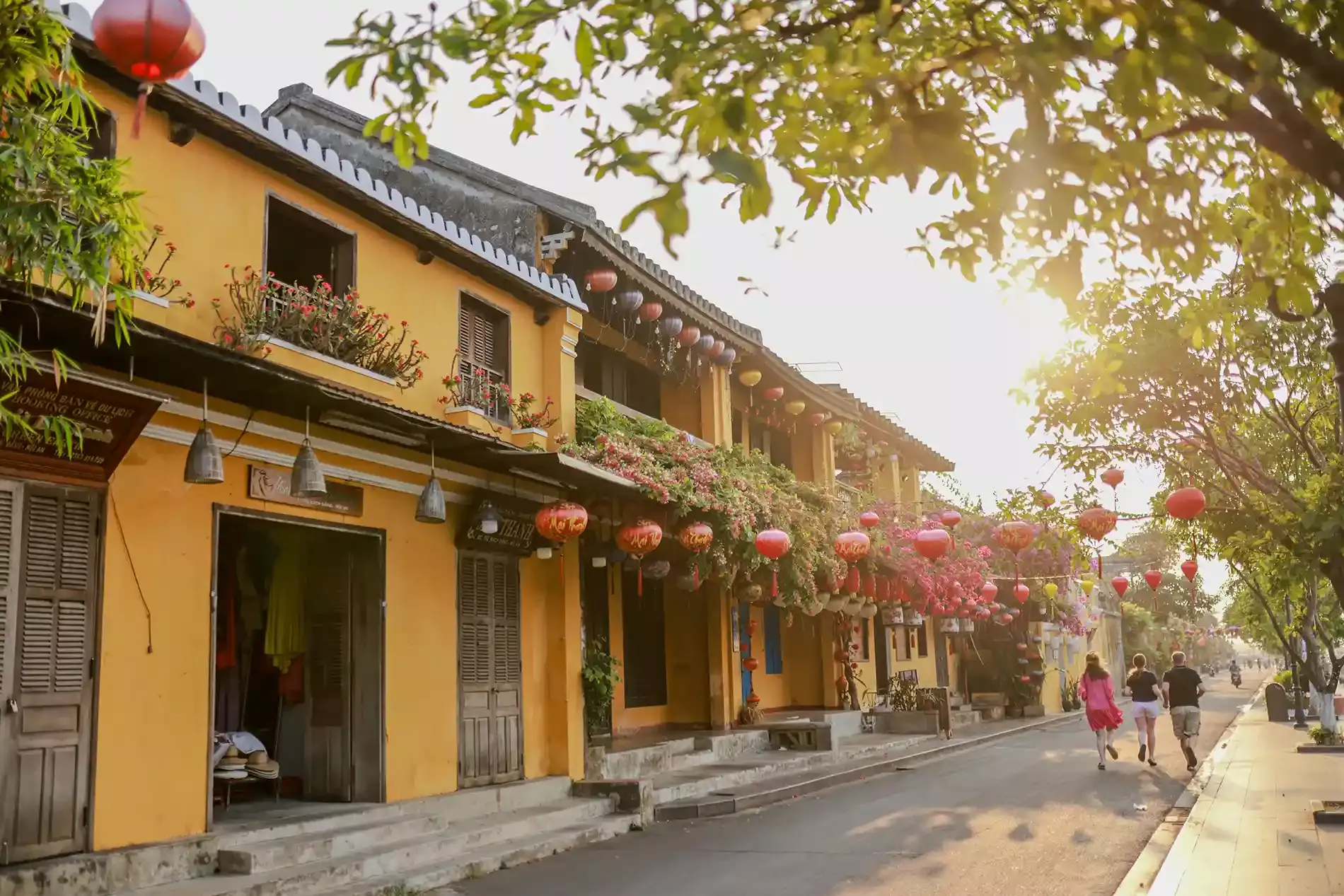
Complete Guide to Hoi An in 20 Questions (2025)
You’ve probably heard of Hoi An — this charming little port town listed as a UNESCO World Heritage site, famous for its photogenic beauty and unique atmosphere. Located in central Vietnam, Hoi An is a must-visit stop on any trip to the country, and for good reason.
This guide is designed to answer all the questions you may have before visiting Hoi An: when to go, what to see, where to eat, what to explore nearby… We hope to give you a clear, comprehensive, and practical overview to help you make the most of your time in this iconic city.
Happy reading — and feel free to contact us if you’d like help planning your trip to Vietnam or the central region!
Table des matières de l'article
Where is Hoi An located in Vietnam ?
Hoi An is located in central Vietnam, about 30 minutes south of Da Nang, the main city of the central region, and roughly a 3-hour drive south of Hue, the former imperial capital. The Old Town sits on the north bank of the Thu Bon River and is crossed by winding canals, giving it a poetic, nature-harmonious atmosphere. It’s also just 3 km from the historical center to white sandy beaches and the blue waters of the East Sea.
Hoi An located on the map
What is the historical importance of Hoi An and why is it listed as a UNESCO World Heritage Site?
Hoi An was a major trading port from the 15th to the 19th century, known as Faifo, and attracted merchants from all over the world to trade ceramics and silk. It was one of the most important hubs of commercial and cultural exchange in Southeast Asia, especially from the late 16th to early 18th centuries, during which Christianity was introduced to Vietnam through Hoi An.
The city is listed as a UNESCO World Heritage Site because it is an exceptionally well-preserved example of a traditional Southeast Asian trading port. It is the only town in Vietnam that has remained intact to such a degree, with most of its buildings constructed in the traditional architecture of the 18th, 19th, and early 20th centuries. Its economic decline in the late 19th century paradoxically helped preserve its original appearance and traditional urban fabric, built almost entirely in wood. Hoi An represents a remarkable fusion of cultures in an international commercial port.
What is the typical architecture of Hoi An Old Town and what are its influences?
Hoi An’s architecture is of great interest, as it is made almost entirely of wood and reflects a unique blend of traditional Vietnamese design with strong Chinese and Japanese influences. The typical layout of a house follows a longitudinal axis (main house – courtyard – rear house) and includes wooden frames, brick or wooden walls, and tiled roofs often decorated with traditional motifs.
The Old Town features numerous religious buildings such as pagodas, temples, assembly halls, and ancestral altars. One of the most iconic structures is the Japanese Covered Bridge, dating back at least to the early 18th century, recently restored.
From the late 19th century, colonial (mainly French) architectural influences also emerged, although many of these constructions were commissioned by wealthy Chinese merchants. These buildings often feature wide brick façades, high windows, and shaded patios adapted to the local climate.
By the 1930s, a hybrid style developed—blending colonial elements, local traditions (such as carved woodwork and heavy doors), and Cantonese influences. Today, Hoi An is instantly recognizable for its saffron-yellow walls, green shutters, and turquoise doors.
Typical architecture of Hoi An
How long is it recommended to stay in Hoi An?
It is recommended to stay at least 2 days and 1 night to fully enjoy Hoi An, and ideally 3 days. While one day might be enough to visit the Old Town if you’re in a hurry, the city has much more to offer — such as beautiful beaches and idyllic villages — which require more time to explore properly.
What is the best time to visit Hoi An?
Hoi An has a tropical monsoon climate with two distinct seasons:
- The dry season runs from January to July. The weather is very pleasant from January to early March, while it gets hot from mid-March to July. The period from mid-April to mid-August is ideal for a beach holiday.
- The rainy season lasts from August to December. Heavy rains and occasional flooding may occur, especially in November, though they usually last only a few days. This period is more suited for indoor attractions such as the Than Tai hot springs or the Thanh Ha Terracotta Park.
It is advisable to avoid April 30th and May 1st, which are major national holidays in Vietnam and attract large crowds of domestic tourists.
For certain visits, such as Ban Co Peak or the My Son Sanctuary, it’s best to go early in the morning to avoid the heat.
Is it true that flooding in Hoi An has become a tourist attraction?
Flooding is a common sight in Hoi An, often caused by the release of water from upstream hydroelectric dams. During these periods, the narrow alleys usually used by pedestrians or scooters turn into navigable canals, and both locals and tourists move around by boat.
This phenomenon has evolved into a form of disaster-resilient tourism. Tourists — particularly from Korea, Europe, and the United States — enjoy the unique experience of riding cyclos or boats through the flooded streets.
Local businesses have adapted by elevating their setups, and many restaurants and cafés offer panoramic views of the floodwaters, drawing in a diverse clientele.
A tour specifically dedicated to Hoi An during the flood season has even been officially launched! Some travelers now book accommodations on purpose to experience this rare and memorable event.
People in boats on the flooded streets of Hoi An
How to get to Hoi An from other major Vietnamese cities?
Hoi An has no airport or train station. Transportation usually goes through Da Nang:
- By plane: Take a flight from Ho Chi Minh City (Saigon) or Hanoi to Da Nang International Airport. From Da Nang, Hoi An is 30 km away — about a 50-minute drive. It’s recommended to rent a car or ask your travel agency or hotel to arrange a transfer.
- By train: Many trains connect Hanoi or Ho Chi Minh City to Da Nang. The journey takes between 15 and 19 hours, but it offers a unique experience with beautiful and varied landscapes. From Da Nang, you’ll need to take a bus or taxi to reach Hoi An.
- By bus: There are also direct buses from Ho Chi Minh City to Hoi An.
How to get around Hoi An and its surroundings?
Hoi An is an easy city to explore:
- The historic center is entirely pedestrian.
- Bicycles are the ideal way to get around the town, reach the beaches (such as An Bang), and explore nearby villages like Tra Que or the Bay Mau Coconut Forest. Most hotels offer free bicycle rentals.
- For longer distances, such as Da Nang or the My Son Sanctuary, it’s recommended to rent a scooter, which costs around 100,000 VND (about €4) per day.
- Cyclos are also available and are particularly popular during the flood season.
- For large groups or longer trips, a private car or tourist bus is a good option. Group tours with guides are also available for planned itineraries.
Where to stay in Hoi An?
Hoi An offers a wide range of accommodation options. It’s recommended to stay near the Old Town (Minh An) for easy access to attractions, or near the beaches for a more relaxing experience. Here are some recommended options:
- Vinh Hung Riverside Resort: Located in the heart of the Old Town, along the Thu Bon River, offering a peaceful and charming atmosphere.
- La Siesta Hoi An Resort & Spa: A 10-minute walk from the Old Town, this resort blends modern architecture with traditional Vietnamese charm. With multiple pools, it’s a favorite for its setting and high-quality facilities.
- Little Hoi An: A boutique hotel in the city center, featuring an authentic ambiance and rustic design.
- Boutique Hoi An Resort: Located on Cua Dai Beach, this resort offers spacious villas and tropical gardens — ideal for sea lovers.
- De An Hotel: A friendly, comfortable place slightly outside the center, easily accessible by bicycle.
- Tra Que Mansion: Perfect for a peaceful stay in Tra Que vegetable village, with a pool and great value for money.
- Bliss Hoi An Beach Resort & Wellness: A luxury resort along the tranquil Binh Minh Beach, offering relaxation, modern comfort, and wellness services.
Outdoor view of La Siesta Hotel in Hoi An
What amenities and services should be considered when planning a day trip in and around Hoi An?
For a rewarding day trip, several key factors should be taken into account:
- Reasonable travel distance: Ideally within a 100 km radius of Hoi An, allowing for 1 to 2 hours of travel time to maximize the experience and reduce fatigue.
- Diversity of experiences: The trip should offer a mix of culture, nature, and cuisine. A good destination should provide at least 3 to 5 hours of meaningful activities (sightseeing, exploring, dining).
- Suitable transportation options: Choose between motorbike (for a more adventurous experience), private car/tourist bus (for groups), or guided group tours with planned itineraries.
- Support services and infrastructure: The availability of dining facilities, restrooms, and resting areas is essential — especially for families or elderly travelers.
- Ease of access and transportation: Convenient and well-maintained routes are preferable, although some remote or off-the-beaten-path locations may still be worth the extra effort.
- Guides or informational signage: These are crucial, especially at historically significant sites, to enhance the understanding of cultural and historical values.
What are the best tips for visiting Hoi An’s Old Town while avoiding the crowds?
To fully enjoy Hoi An’s Old Town and steer clear of the crowds:
- Visit in the morning: From as early as 6 AM, you’ll find a few tourists out for photos, but the atmosphere remains peaceful and relaxing.
- Avoid the Old Town in the evening: From late afternoon into the evening, the riverside area becomes extremely crowded. Asian and domestic tourism (especially in July, during Vietnam’s school holidays) peaks at this time. Hundreds of boats set off, and the bridges can become literally packed with people.
- Choose alternative evening spots: Consider riverside bars located outside the historical center or visit Tra Que village for a quieter evening.
- Be selective with activities: Some experiences, like the basket boat rides in Cam Thanh, have become very touristy and may not suit those seeking a peaceful atmosphere. On the other hand, bike rides through the rice fields remain a calm and low-traffic activity.
What are the main activities to do in Hoi An’s Old Town?
Hoi An’s Old Town, covering less than 2 square kilometers, invites visitors to enjoy peaceful walks through its narrow, winding streets lined with ancient houses and colorful lanterns.
Beyond leisurely strolls, several enriching activities can be planned:
- Explore traditional old houses, such as Tan Ky Ancient House (1741), Phung Hung, Quan Thang, and Duc An House (circa 1830).
- Visit the Japanese Covered Bridge (Chùa Cầu), built in the 17th century – an iconic symbol of Hoi An (although its recent renovation has somewhat diminished its charm).
- Discover Hoi An’s museums, including the Museum of Sa Huynh Culture, Museum of Trade Ceramics, Museum of Folk Culture, and the Hoi An Museum. The Precious Heritage Museum by photographer Réhahn is also a must-see to learn about Vietnam’s ethnic diversity.
- Attend traditional Cham dance performances at the My Son Sanctuary.
- Try unique artistic workshops, such as making traditional masks at The Timing Masks Hoi An or crafting your own lanterns.
- Take a boat ride or walk along the Hoai/Thu Bon River at sunset, when the streets glow with colorful lanterns, creating a magical atmosphere.
- Join the floating lantern release on the river — a meaningful tradition symbolizing wishes and good fortune.
- Browse the Hoi An Night Market on Nguyen Hoang Street for handmade souvenirs and local delicacies.
- Attend the “Hoi An Memories” show (Ký ức Hội An), a spectacular outdoor performance retelling the town’s history and cultural heritage.
- Try traditional games, such as Bài Chòi, a fun mix of bingo and folk singing.
Colorful mini lanterns for sale in Hoi An
What are the recommended day trips from Hoi An?
Hoi An is a great starting point to explore the natural and cultural highlights of central Vietnam. Recommended destinations include:
- Da Nang (about 30 km): A vibrant coastal city featuring the Son Tra Peninsula (Linh Ung Pagoda and the giant Lady Buddha statue), My Khe Beach, and the famous Dragon Bridge and Love Bridge.
- Cham Islands (20 km, 15 minutes by speedboat): A tropical paradise known for its crystal-clear waters, white sandy beaches (Bai Chong and Bai Xep), snorkeling, coral viewing, and visits to a local fishing village.
- My Son Sanctuary (40 km): A UNESCO World Heritage Site with the ancient remains of the Cham Kingdom, featuring unique architecture and traditional dance performances.
- Tam Thanh Mural Village (50 km): A colorful seaside village covered in vibrant street art, offering a unique artistic experience and insights into traditional fish sauce production.
- Ban Co Peak (50 km): A scenic viewpoint overlooking Da Nang and the Son Tra Peninsula, marked by a statue of De Thich playing chess. The road is steep and suited for confident drivers.
- Nui Than Tai Hot Springs Park (60 km): Ideal for relaxation with natural hot springs, mud baths, and a water park.
- Grang Waterfall (80 km): A wild and beautiful waterfall in the Nam Giang forests, accessible by a short hike, with natural pools perfect for swimming.
- Phu Ninh Lake (60 km): A peaceful eco-tourism area offering kayaking, mineral hot spring baths, camping, and wildlife watching.
- Bay Mau Coconut Forest (5 km): A “mini Mekong Delta” experience with basket boat rides and fishing net throwing demonstrations.
My Son sanctuary
Which traditional villages near Hoi An are worth visiting to discover local crafts and agriculture?
The surroundings of Hoi An are home to several traditional villages specializing in craftsmanship and agriculture, all easily accessible by bicycle:
- Tra Que Vegetable Village (3 km): Famous for its organically grown vegetables and aromatic herbs cultivated using traditional methods with seaweed-based natural fertilizers. Visitors can learn organic farming techniques, become a farmer for a day, and join cooking classes.
- Thanh Ha Pottery Village (4 km): Preserves a 500-year-old ceramic tradition. Visitors can watch skilled artisans at work, try pottery-making themselves, and explore the Thanh Ha Terracotta Park, the largest ceramic museum in Vietnam.
- Kim Bong Carpentry Village (3 km): Home to talented woodcarvers and carpenters who contributed to Hoi An’s traditional wooden architecture. Visitors can observe artisans at work, learn about woodworking techniques, purchase handcrafted souvenirs, and even see traditional boatbuilding.
- Cam Chau Village: Known for lantern-making, a craft symbolic of Hoi An.
- Phuoc Kieu Village: Specializes in bronze casting, preserving centuries-old metalworking traditions.
- Ban Thach Village: Has been producing colorful woven mats for over 500 years.
- Silk Village: Offers an immersive experience into the traditional Vietnamese silk-making process, from silkworm to finished garment.
Tra Que gardens, Hoi An
What is a Coconut Basket Boat ride like, and where does it come from?
The basket boat ride takes place in the Bay Mau Coconut Forest, located just 5 km from Hoi An. These round traditional boats, known as “thuyền thúng”, offer a truly unique experience.
According to legend, local fishermen began crafting these large floating baskets to evade a tax on boats imposed by the French during colonial times, claiming they were baskets, not boats.
Today, this has become a popular and entertaining tourist activity. During the 1.5-hour ride, visitors can enjoy bamboo boat spinning performances, net-throwing demonstrations, and even acrobatic tricks performed to music, creating a lively and festive atmosphere.
Basket boats are still used for traditional fishing by local communities.
Basket-boat ride near Hoi An
What are the must-try local dishes in Hoi An?
Hoi An is a true culinary paradise. Here are some of the must-try specialties:
- Cao Lau: The signature noodle dish of Hoi An. Made with thick noodles, marinated pork, fresh herbs, and a special sauce — the noodles are traditionally prepared using water from ancient Hoi An wells, giving them a unique texture.
- Mi Quang: A flavorful noodle dish with a rich broth and toppings such as shrimp and pork.
- Banh Trang Cuon Thit Heo: Tender boiled pork rolled with fresh herbs in rice paper, served with a savory dipping sauce (originally from Da Nang).
- Bun Cha Ca: A delicious noodle soup with fish cakes.
- Hoi An Chicken Rice (Com Ga): Fragrant rice served with shredded chicken, herbs, and pickled vegetables.
- Banh Xeo: Crispy Vietnamese pancakes filled with pork, shrimp, and bean sprouts.
- Nuoc Mot (MOT Herbal Tea): A refreshing and fragrant drink made from tea, lemongrass, lime, cinnamon, and fresh lotus petals.
- Banh Mi: The famous Vietnamese sandwich with a crispy baguette and a variety of fillings (vegetables, herbs, pâté, chicken or pork).
- Ca Phe Sua Da (Vietnamese Iced Coffee): Strong coffee mixed with sweetened condensed milk and poured over crushed ice.
Where to eat and drink in Hoi An?
To truly experience Hoi An’s cuisine:
- Local markets are great for sampling specialties such as Cao Lau, Banh Xeo, and Banh Mi. Cong Nu Ngoc Hoa Street is especially known as a foodie’s paradise.
- For Banh Mi, try local favorites like Madam Khanh, Banh Mi Phuong, or Phi Banh Mi.
- Recommended restaurants include:
Ba Dam Vegetarian Restaurant, Nanh Kitchen, Cao Lau Khong Gian Xanh, Ganesh Indian Restaurant, Phan Gia Café & Restaurant, and Bikini Bottom (great burgers near the beach). - For drinks, Hoi An is full of cozy cafés offering peaceful vibes. Notable mentions: Hill Station, Cafe Lolali, and Phin Coffee. Don’t miss the famous MOT herbal tea at 150 Trần Phú Street.
- For a more vibrant nightlife, check out bars and pubs like Dive Bar (live music), White Marble Wine Bar (jazz), and Q Bar (Japanese-inspired decor).
What can you do in Hoi An at night?
Although small, Hoi An has developed a lively nightlife scene thanks to its popularity with travelers. Here are some unique evening activities to enjoy after sunset:
- Release floating lanterns on the Hoai River — a meaningful tradition where lotus-shaped lanterns are set afloat, symbolizing wishes and inviting good fortune.
- Take a boat ride on the Hoai River to admire the illuminated townscape, especially magical on full moon nights.
- Watch the “Hoi An Memories” show (Ký ức Hội An) — an impressive outdoor performance featuring lights, music, and dramatic reenactments of life in Faifo 400 years ago.
- Stroll through the lantern-lit pedestrian streets, where the colorful lights create a hypnotic and poetic atmosphere.
- Explore the Hoi An Night Market on Nguyen Hoang Street — a vibrant spot to find souvenirs, local crafts (like Thanh Ha pottery), and street food delights.
- Visit the Anh Trang Thuong Cang Bridge, which lights up at night with captivating visual effects.
- Try traditional Vietnamese games, such as Bài Chòi, often performed at the night market with music and audience participation.
- Taste local cuisine at food stalls or dine in one of the many restaurants that come alive in the evening.
- Enjoy a cup of coffee or herbal tea in one of the Old Town’s charming cafés.
- Discover Hoi An’s bars and pubs, which offer a cozy, European-style atmosphere while maintaining the charm of the old town.
Where to get custom-made clothing in Hoi An, and what are the tips?
Hoi An is renowned for its tailor-made clothing. The tailoring industry began to thrive after the Old Town was recognized by UNESCO in the 1990s, responding to growing demand from travelers for high-quality fabrics, especially linen and silk.
You can have clothes made in just a few hours or within a day. Prices typically start around €20 for custom linen shorts and €30 for a long-sleeve linen shirt.
Thien Thi Tailor (11 Phan Boi Chau Street) is one example of a well-regarded workshop.
Tips for a good experience:
- Be very clear and specific about your order, and ask for everything in writing
- If possible, start the process early in your stay, allowing 1–2 days for fittings and adjustments.
- Don’t hesitate to negotiate the price — bargaining is common practice in Vietnam.
- Be cautious of street touts and avoid overly pushy tailors in the market area.
What is the Precious Heritage Museum, and who is Réhahn?
The Precious Heritage Museum (26 Phan Boi Chau Street) is both an art gallery and an ethnographic museum located in Hoi An. It showcases the work of Réhahn, a French photographer who, over a decade ago, embarked on an ambitious project: to meet all 54 ethnic groups of Vietnam and document their traditional crafts, clothing, and ways of life — many of which are at risk of disappearing.
The museum features stunning portrait photography, paired with authentic traditional costumes and rich cultural information about each group. It’s beautifully curated and offers a rare window into Vietnam’s incredible ethnic diversity.
Réhahn rose to international fame partly thanks to his encounter with Madame Xong, a local boat captain whose portrait, titled “Hidden Smile,” went viral worldwide and became one of his most iconic works.
Precious Heritage Museum in Hoi An
We hope we’ve answered many of your questions about Hoi An! Feel free to check out our tours in Central Vietnam!
Sorry, the comment form is closed at this time.

